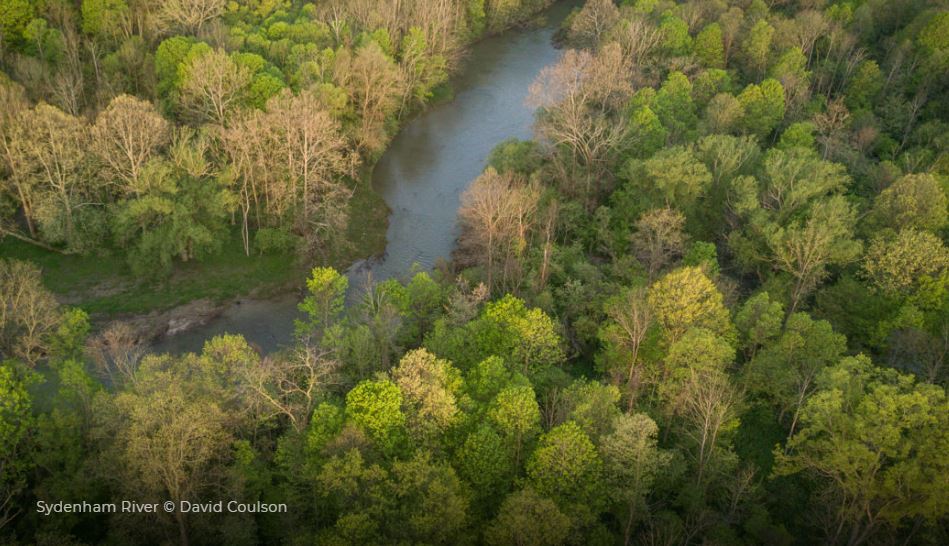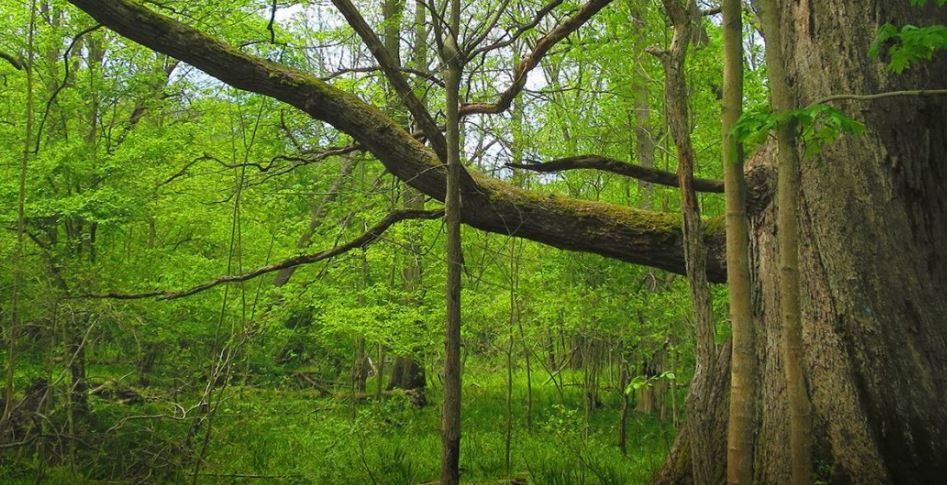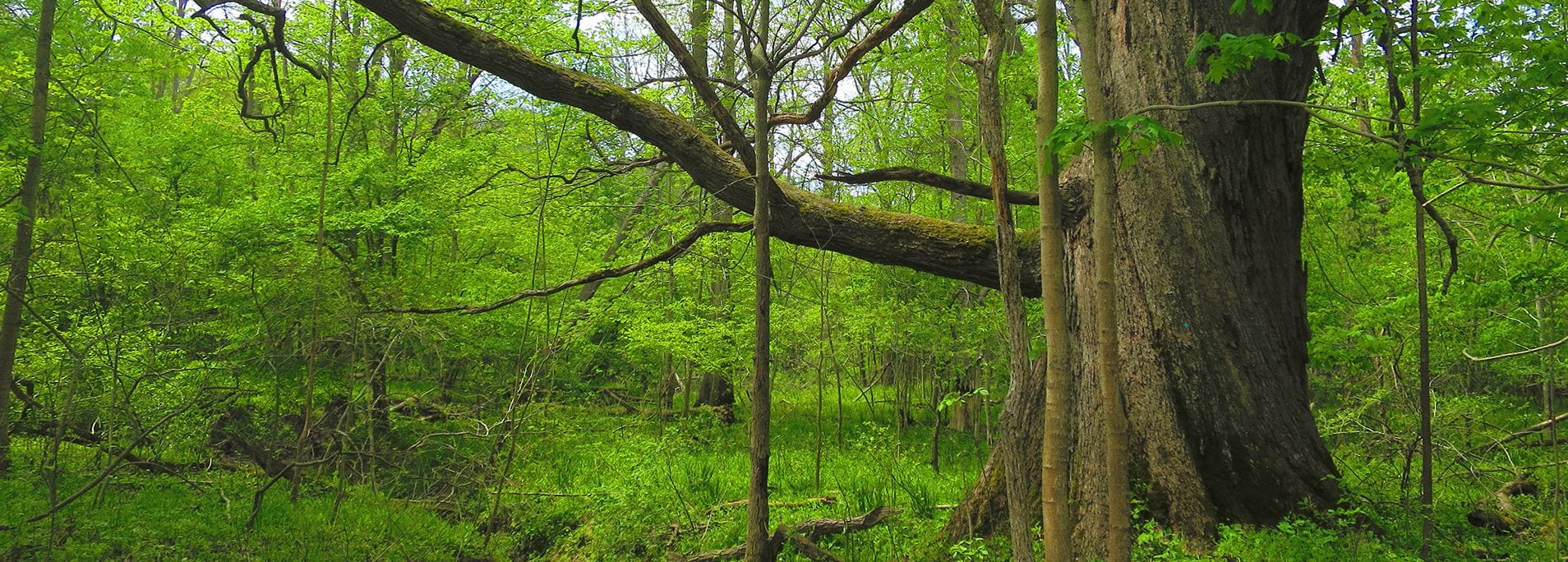Ontario Nature, in conjunction with the Ontario and Federal government, announced the expansion of its Sydenham River Nature Reserve. The newly acquired 100-acre property is part of the Carolinian Zone, a region that has more flora and fauna species than any other Canadian ecosystem but has lost 98 percent of its natural cover.
“Our government is growing Ontario’s conservation spaces to protect important natural areas and provide people with more opportunities to benefit our physical and mental health. By collaborating with conservation leaders like the Ontario Land Trust Alliance, Ontario can achieve our shared goals to protect our land, air and water for future generations.” – David Piccini, Minister of the Environment, Conservation and Parks.
The property is teeming with life. Several species listed under Canada’s Species at Risk Act, such as the endangered cerulean warbler, red-headed woodpecker, and northern map turtle (special concern). All of these animals have been identified on the property, which also includes mature Carolinian forest, treed swamp and an important tributary of the East Sydenham River.
“This region is a real biodiversity hotspot. Expanding our Sydenham River Nature Reserve will allow us to protect high conservation priority areas forever.”
Caroline Schultz, Ontario Nature’s Executive Director
The project was funded by the Government of Canada. It’s supported through the Natural Heritage Conservation Program and the Habitat Stewardship Program.
Other funders and contributors include the Ontario Land Trust Alliance and Government of Ontario. This is done through the Greenlands Conservation Partnership Program, Sydenham Field Naturalists, Lambton Wildlife Inc., Nature London, Essex County Nature, Ingersoll District Nature Club, Nature Guelph, the South West Woodlot Association, Aecon, St. Thomas Field Naturalists and many Ontario Nature members.

Protecting and Recovering Species at Risk, is not reading for the faint of heart.
“The twin crises of climate change and biodiversity loss are two sides of the same coin, and we must tackle both crises together. By working with partners like Ontario Nature, we are protecting Ontario’s natural environment and building a healthier and more resilient future for our children and grandchildren. Programs like the Canada Nature Fund’s Natural Heritage Conservation Program and the Habitat Stewardship Program are helping us progress toward conserving a quarter of Canada’s land and a quarter of its oceans by 2025.
Steven Guilbeault, Minister of Environment and Climate Change
FACTS:
- To date, 38 species at risk and 28 other rare species have been observed on or near the Sydenham River Nature Reserve.
- The 100-acre property contains mostly mature forest and wetlands, along with a portion of farm field.
- With this purchase the Sydenham River Nature Reserve grew by more than 50 percent.
- The property is home to endangered cerulean warblers and red-headed woodpeckers, and special concern bald eagles and northern map turtles.
“This acquisition created an impressive 300-acre reserve that will protect numerous rare and at-risk species at this ecologically significant property”
Larry Cornelis, President, Sydenham Field Naturalists
ABOUT:
The Government of Canada’s Natural Heritage Conservation Program (NHCP) is a public-private partnership. The program was put in place to support new protected and conserved areas with the goal of securing private lands. The program is managed by the Nature Conservancy of Canada (NCC). When Federal funds are invested in the program they are matched with contributions raised by NCC. and its partners. Ducks Unlimited Canada and the country’s land trust community are part of the program.
“Large tracts of forest are incredibly rare in southern Ontario. This reserve protects the largest remaining forest along the Sydenham River, and will remain a home for turtles, birds, rare Carolinian plants and countless other species”
Tanya Berkers, President, Lambton Wildlife Inc.
The property has been secured with the support of the Government of Ontario through the Greenlands Conservation Partnership, which helps conserve ecologically important natural areas and protect wetlands, grasslands and forests that help mitigate the effects of climate change. Through the Greenlands Conservation Partnership, a total of $50 million will be invested over four years, including $20 million from the Ontario government, and another $30 million from other sources, such as individual donations and foundation support through the NCC and the Ontario Land Trust Alliance, and other levels of government.

“Maintaining wildlife corridors and fragile habitats means that nature’s diversity is sheltered and safeguarded. We are proud to be a part of this project and looking forward to seeing this property enhanced and preserved for future generations.”
Dave Ferguson, Mayor of Brooke-Alvinston (and spouse Gabrielle Ferguson)
Government of Ontario is quietly setting the stage for development projects to proceed without public consultation
Ontario Nature protects wild species and wild spaces through conservation, education and public engagement. Ontario Nature, which began in 1931, has frequently taken issue with the Ontario government and their development goals. Most recently through the MZO Order.
Minister’s Zoning Orders (MZOs) are increasingly being used to fast-track development on farmland, wetlands and greenspaces across Ontario. MZOs eliminate any opportunity for public scrutiny or input. Ontario Nature says “The Government of Ontario is using MZO’s to advance their “jobs vs. the environment” narrative.”
The organization asks Ontario residents to “Please speak up for Ontario’s more than 240 at-risk plants and animals.”

We are now in the throes of the largest mass extinction since the disappearance of the dinosaurs more than 65 million years ago. Globally, almost one in eight birds, one in four mammals, and one in three amphibians are in jeopardy. Habitat loss and degradation, climate change, invasive species, pollution and over-exploitation of natural resources are driving the decline.
In Ontario, there are over 230 plant and animal species that are at-risk of extinction or of disappearing. Their loss is jeopardizing the well-being of all living things, including humans, according to Ontario Nature.









